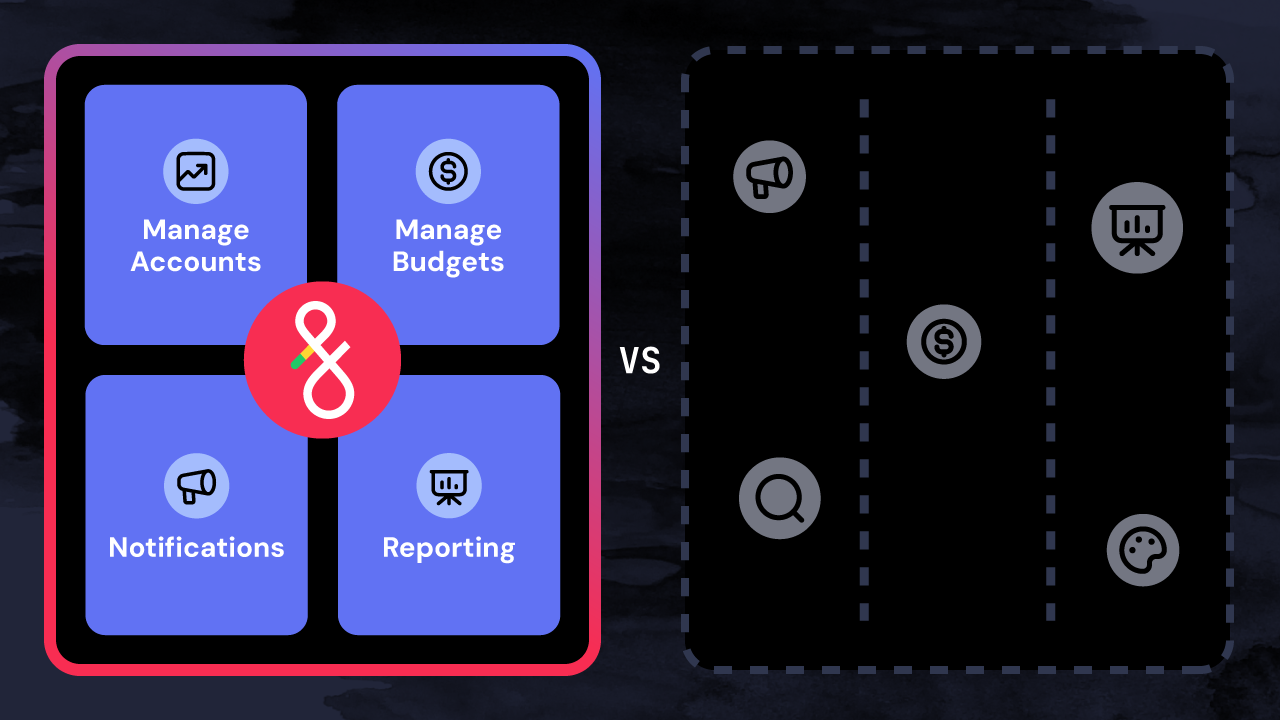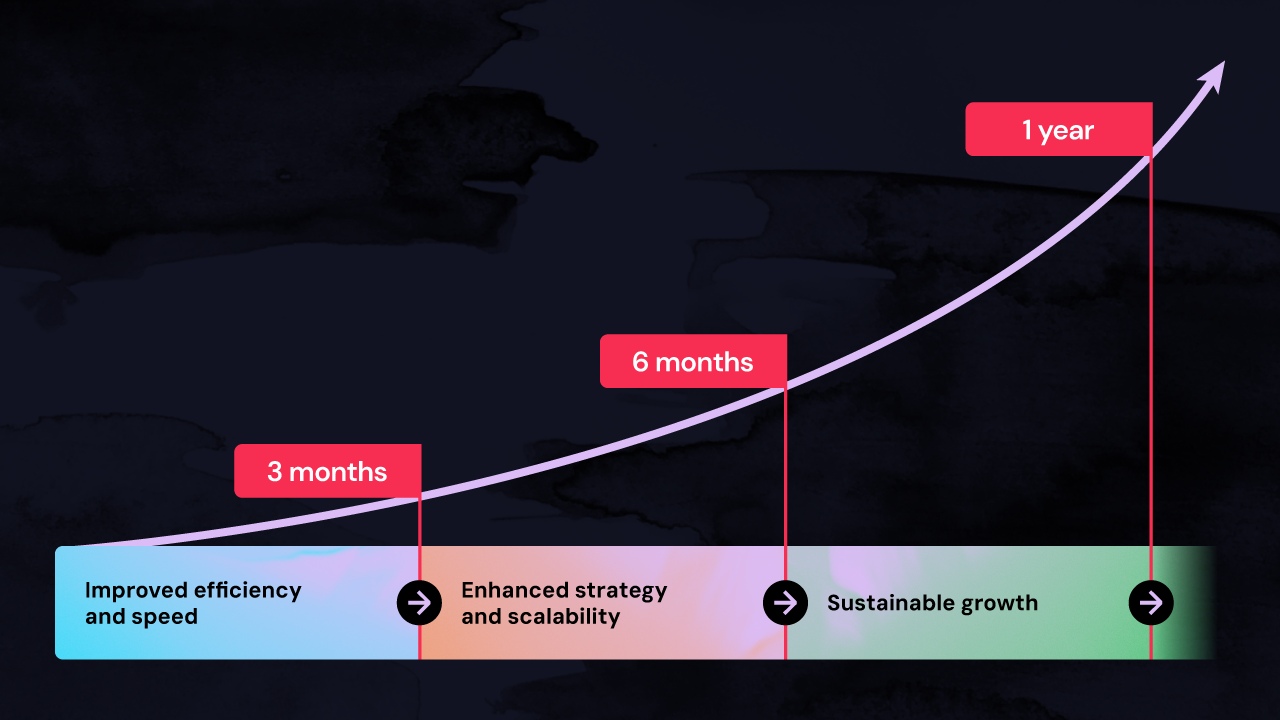Digital advertising depends on data. But when your advertising data is broken up between different sources, inconsistently formatted, incomplete, or just plain wrong—also known as “dirty data” or “poor quality data”—the risks ripple across every part of your AdOps.
It’s tempting to assume that with the right technology, such as AI, these issues will resolve themselves. In reality, even the most powerful tools are only as effective as the data flowing through them. In other words, if your data is suboptimal, technology can’t make it any better.
So, what’s really at stake if you don’t fix your data? Even if you’re not using advanced technologies like AI and automation within your advertising operations, low-quality data limit your ability to scale processes. Let’s look at the hidden financial, operational, and strategic costs that poor data generates within advertising operations.
What happens when AI uses inaccurate advertising data?
When advertising AI tools are given incomplete or inaccurate data, it produces faulty outputs that misinform your team, subsequent workflows, and even clients.
AI can only understand the data that it is given. Running low-quality data through specialized advertising AI can result in mistakes that create workflow bottlenecks or result in accidentally investing in underperforming campaigns.
Rather than giving you real-time intelligence that improves performance, feeding AI poor data can send your decision-making off-course. As a result, you risk:
- Serving incorrect ads that lead to compliance infractions, potentially impacting co-op ad funds in certain industries.
- Launching campaigns that deviate from client-approved strategies, increasing credit risks and client churn.
- Requiring extensive human intervention for quality assurance, diverting time from strategic work and reducing efficiency.
- Wasting budget on the wrong channels, campaigns, or ad sets.
- Making decisions based on outdated or incorrect insights.
Common follow-up questions: AI and inaccurate data
Q: Can AI fix poor-quality data automatically?
A: No, advertising technologies like AI and automation need clean, accurate data to produce reliable results. While some advanced tools can flag anomalies, these tools are the exception and not the rule. Data cleaning, structuring, and standardization are critical steps that human teams must take to ensure a reliable data foundation.
Q: How do advertisers usually find out their data isn’t clean?
A: Advertisers typically realize their data isn't clean or "ready" when they hit performance and operational roadblocks that reveal these underlying inconsistencies. This often happens when poor monthly performance data undermines basic reporting and strategic decision-making. For example, data lags will cause you to see one conversion number in the ad platform, a different one in your analytics tool, and yet another in the CRM.
How does low-quality data lead to advertising workflow inefficiencies?
Poor data quality disrupts both automated and manual workflows. It’s easier to understand how advertising automation may malfunction without clean inputs. However, many advertisers don’t realize that incomplete and inaccurate data can negatively impact manual campaign management processes, too.
How can you determine if poor data quality is at the heart of your operational roadblocks? Check if your ad teams are spending an inordinate amount of time on these tasks:
- Manual data triage: Do your teams spend excessive hours reconciling spreadsheets and finding missing or mismatched numbers? The more time they spend fixing flaws in your data sets, the less time they have for strategic work.
- Fragmented campaign management: Does your team have too many disparate data sources, requiring endless cross-checking and data lags? Data fragmentation prevents your team from running scalable, real-time campaign strategies.
- Error-prone processes: Do many of your data-forward tasks rely on manual data entry, manipulation, or workflows? Manual data processes are more likely to introduce human error, especially if you’re already working with inconsistent or outdated information.
When your team is constantly putting out data fires, they’re missing the big picture for every account they manage. Manual data processes often magnify these risks because the mistakes are more frequent and harder to catch.
More importantly, your AdOps workflows won’t be scalable because you don’t have the right data foundation in place. This means you can't activate real-time campaigns, you can't run a unified strategy across all channels, and your technology investments will inevitably fall short of their promised ROI.
How does siloed advertising data prevent unified, multichannel advertising strategies?
When advertising data lives in different systems, tools, or platforms, it builds walls between teams and prevents them from seeing the full strategic picture. If your advertising data sources can’t “speak” to each other, you’ll likely:
- Miss finding and activating key insights across channels.
- Struggle to measure full-funnel performance and cross-channel attribution.
- Make reactive, rather than proactive, strategic adjustments.
- Struggle to keep your data clean, secure, and up-to-date for compliance needs (at least without a lot of frustrating manual work).
Siloed data makes it difficult to analyze performance across all channels, leading to missed opportunities for optimization and audience targeting. It also limits your team’s ability to create cohesive, personalized campaigns that reach consumers wherever they are in their journey.
Without a unified view of advertising data, teams may also struggle with duplicate or conflicting information that wastes both time and resources. This not only hinders productivity but also undermines the accuracy and effectiveness of ad campaigns (a real problem for agencies managing clients with big multichannel goals).
How does poor data quality impact audience segmentation and campaign drift?
When audience data is inconsistent or outdated, reaching your intended users becomes more of a guessing game than a strategic advantage. Even small discrepancies between your CRM records and ad platforms can snowball into much bigger issues.
Audience segmentation relies on accurate, up-to-date signals, such as demographics, behaviors, and preferences. If your source data isn’t synchronized to the audiences within each channel, your segments lose meaning. Users may get dropped into the wrong groups or critical segments might get overlooked entirely.
This misalignment directly contributes to campaign drift. Campaign drift is when campaigns gradually stray from their intended audience or objective due to subtle data errors. For example, if a major ad publisher categorizes users differently from your CRM, your budget could end up targeting less valuable audiences without you realizing it. Over time, campaign drift can erode performance: ads become less relevant, engagement drops, and costs per acquisition rise.
Essentially, campaign drift puts your advertising efforts on autopilot…except the signals follow the wrong map. If you notice a gradual decline in key metrics or difficulty replicating past successes (often without a clear cause), you might be experiencing campaign drift. You’ll need to carefully examine where your data syncs break down, which segments are most affected, and how to get alignment back on track to correct the drift. If your data foundation is already sloppy, this process can feel extra tedious.
To help ensure both your audience segments and customized campaigns stay aligned:
- Regularly review audience lists for accuracy, removing any outdated or duplicative entries.
- Standardize naming and segmentation criteria across all systems: campaigns, ad sets, audience lists, etc.
- Start with small test budgets to validate targeting before scaling.
What AdOps costs tie back to low-quality advertising data?
For advertisers, the costs of low-quality data are both obvious and hidden:
- Higher labor costs: Fixing and reconciling the trickle-down effects of poor data requires a lot of manual work. In most cases, this means hiring more staff to do this work as you bring in new accounts.
- Lost opportunities: Delays and distractions reduce your team’s capacity to focus on strategic campaign work or facetime with clients. This can impact campaign performance as well as jeopardize client relationships.
- Employee burnout and turnover: No ad strategists want to spend their time troubleshooting and fixing poor data practices. Too much tedious work drives down team morale and increases retention risks.
- Increased training costs: New team members need extra onboarding time to learn workaround processes and fill knowledge gaps caused by inconsistent data. This slows ramp-up, adds to operational overhead, and pulls your top-performing team members away from more valuable work.
- Inefficient cross-team collaboration: When each team works from a different “source of truth,” communication breaks down and projects get stuck. If you’re an agency managing someone else’s budget, this can be detrimental to client performance and satisfaction.
The ripple effects of these costs can add up quickly. For example, if ad strategists and account managers aren’t working from the same reliable dataset, it becomes nearly impossible to align on true multichannel campaign performance. This fragmentation means more (or longer) meetings, errors creep into reporting, and slow or inaccurate decision-making.
Over time, these compounding inefficiencies don’t just erode client and employee trust: they create a pervasive drag on every dollar spent. A lack of alignment and data confidence ultimately sabotages your most ambitious growth goals, making it impossible to scale your advertising operations successfully.
FAQ: The impact of low-quality data in digital advertising
Q: What does poor-quality data look like in digital advertising?
A: Poor-quality data is any advertising data that is incomplete, inconsistent, duplicated, or inaccurate. Advertising data readiness is a must for getting the most value and impact out of multichannel campaigns.
Q: What’s the fastest way to spot advertising data issues?
A: Set up regular data quality checks and monitor for sudden or unexplained performance changes. Do your best to consolidate your data sources and organize your data so it’s easy to spot discrepancies.
Q: Why do small data errors often lead to bigger challenges down the line?
A: Even the most minor data mistakes can snowball as campaigns scale, causing reporting discrepancies, wasted budget, and misaligned targeting. Fixing these issues later usually requires even more time and resources than taking the time to properly clean and prepare advertising data first.
Q: How can advertisers prepare their data for better campaign performance?
A: Prioritize cleaning and standardizing your data before launching campaigns. This includes removing duplicates, correcting inconsistencies, and ensuring all records are up to date. Regular audits and establishing clear data management practices will help set a strong foundation. If you need help getting started on any of these foundational data cleaning steps, download our guide to data readiness in digital advertising.
Why data quality matters in digital advertising
Clean, consistent advertising data is the backbone of successful (and scalable) digital campaigns. When your data is reliable, every campaign, strategy, and report is built on a solid foundation. Taking key steps to standardize, clean, and maintain advertising data sources sets your team up for smarter decisions and stronger performance across every channel.
Not sure how to get started with cleaning and preparing your data for tools like AI and automation? Download our full guide to data-powered advertising for best practices, step-by-step data preparation instructions for key advertising data types, and more.






